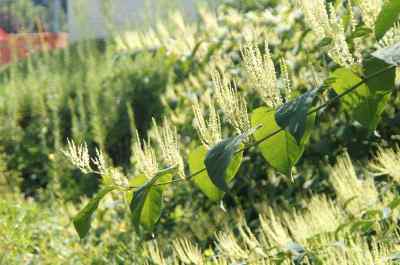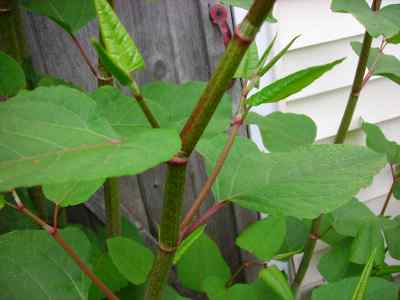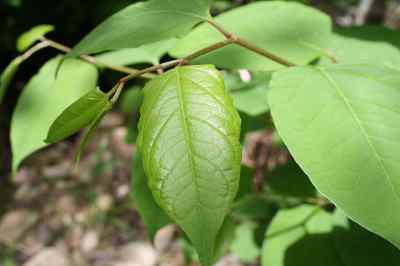Japanese Knotweed Edible Invasive Species

When mature a Japanese Knotwood plant will stand 7 to 10 feet tall and they often form dense thickets. Outwardly the stems look much like bamboo. You aren't likely to confuse the plant with bamboo, due to its much broader leaves. The leaves sprout from the stem nodes just like bamboo, but Japanese Knotwood will sprout the leaves in an alternating zigzag pattern. The stems are hollow like bamboo as well when mature.
The flowers of the Japanese Knotwood are small, cream or white, standing racemes 2 to 6 inches long. Flowering occurs in late summer or early fall.
Japanese Knotwood ranges through-out much of North America, occurring in about 80 of the states and Canadian provinces.
The stems of Japanese Knotweed are edible, but only when the plant is young. Don't even think about eating an older plant. Since the plant only has edible stems when the plant is young this means that you will only be consuming the stem in April and May.
Boil the shoots before eating for best experience.
It is important to note that it is illegal to propagate this plant. This is because it is an invasive plant that is not supposed to be growing here. However, it is here to stay and when in a SHTF situation can be a great source of seasonal food if you are knowledgeable enough to recognize it.


